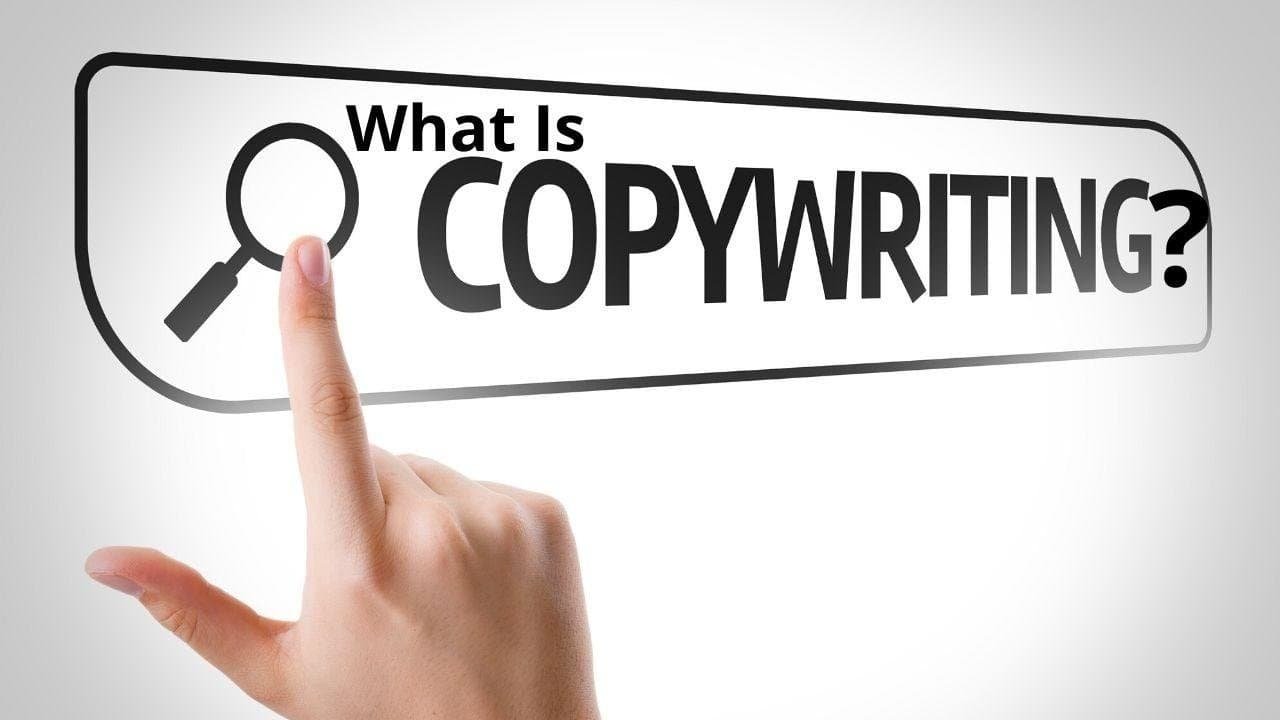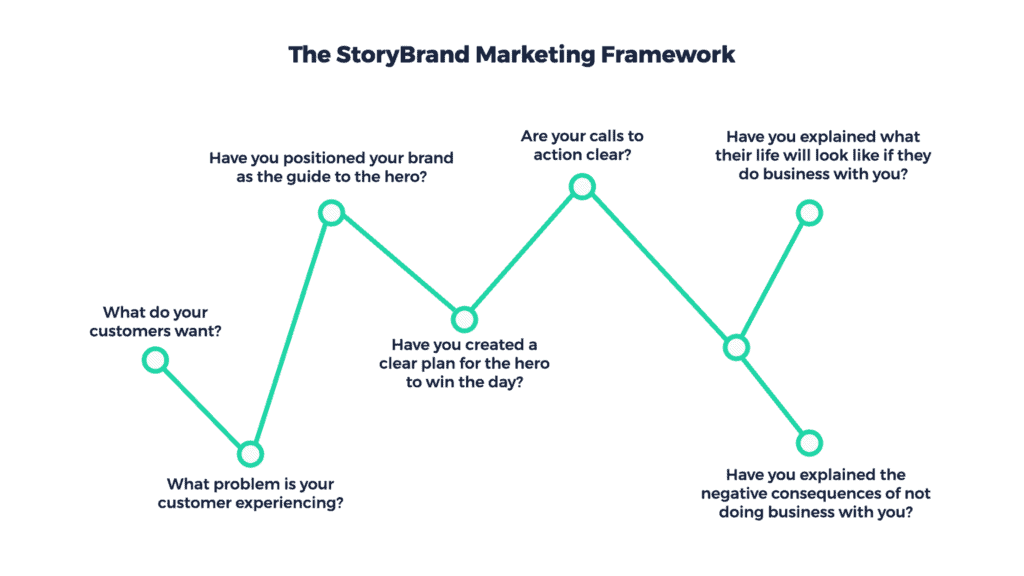Hey there! Are you tired of pouring your hard-earned money into marketing campaigns that seem to vanish into thin air? Do you feel like your message is getting lost in the crowded marketplace? You’re not alone. Many businesses struggle to connect with their customers in a meaningful way, leading to wasted marketing dollars and missed opportunities.
But here’s the secret: the key to captivating audiences and skyrocketing sales lies in the power of storytelling. Enter the StoryBrand Framework – a revolutionary approach that transforms how businesses communicate with their customers. By harnessing the age-old principles of storytelling, the StoryBrand Framework helps you craft compelling narratives that resonate deeply with your target audience, turning them from passive observers into engaged customers.
This comprehensive guide will take you through the seven steps of the StoryBrand Framework, providing you with the tools and techniques you need to master this transformative approach. Get ready to unlock the secrets of crafting messages that stick, engage your audience like never before, and drive real results for your business.
Why Most Marketing Fails Miserably (and What to Do About It!)
Let’s face it: most marketing today is tragically ineffective. It ignores the very people it’s trying to reach, leaving customers confused, disinterested, and ultimately, unresponsive. This disconnect between businesses and their customers is a recipe for marketing disaster, leading to wasted budgets and dwindling returns.
The root of the problem? Businesses often become so enamored with their own story – their history, their accomplishments, their unique features – that they forget the most crucial element: the customer. They fail to address the customer’s needs, desires, and pain points, leaving them feeling unheard and unvalued.
The StoryBrand Framework provides a solution to this pervasive problem by shifting the focus from the brand to the customer. It helps you craft a customer-centric narrative that speaks directly to their aspirations and challenges, making them the hero of your story.
By understanding and addressing your audience’s needs and desires, you can create marketing messages that resonate, engage, and ultimately, convert. This approach ensures that your customers don’t just grasp what you do – they deeply understand the unique value proposition that sets your brand apart from the competition.

The StoryBrand Framework: A Simple Yet Powerful Formula for Marketing Success
Imagine your customer embarking on a journey, facing challenges, and seeking solutions. Now, envision your business as the wise guide, leading them to triumph. That’s the essence of the StoryBrand Framework – a strategic approach that positions your customer as the hero and your brand as their trusted ally.
The StoryBrand Framework is based on the seven universal elements of a compelling story:
- A Character: Your ideal customer, facing a problem and longing for a solution.
- Has a Problem: The external, internal, and philosophical challenges your customer encounters.
- And Meets a Guide: Your brand, empathetic to their struggles and equipped with the expertise to help.
- Who Gives Them a Plan: A clear, concise path forward, outlining the steps to success.
- And Calls Them to Action: A direct invitation to engage with your brand and take the next step.
- That Helps Them Avoid Failure: Highlighting the consequences of inaction and amplifying the need for a solution.
- And Ends in Success: A vivid picture of the positive outcomes achieved by embracing your brand’s offering.
This framework, also known as the BrandScript, provides a blueprint for crafting marketing messages that connect with your customers on an emotional level and guide them seamlessly toward a desired outcome. It’s not about bombarding them with features and benefits; it’s about creating a narrative that resonates with their deepest desires and helps them envision a brighter future.
Uncover the Desires Hidden Within Your Customers’ Hearts
The first step in crafting a compelling StoryBrand narrative is to identify what your customer wants. What are their aspirations, goals, and dreams? What do they long to achieve or become? Understanding your customer’s desires is crucial because it allows you to position your brand as the vehicle that helps them fulfill those desires.
Don’t make your customer work to understand what you offer. Your message should be clear, concise, and easily digestible. To uncover your customer’s true desires, consider the following:
- Directly ask your clients: Initiate conversations, conduct surveys, and actively listen to their feedback.
- Explore competitor reviews: Delve into online reviews and testimonials to understand what customers are seeking and appreciating in your industry.
- Conduct in-depth customer interviews: Engage in one-on-one conversations to delve deeper into their motivations and challenges.
Remember, your customers might have multiple desires, but your StoryBrand narrative should focus on a single, overarching desire that encapsulates their core motivation. For example, Nike sells a diverse range of athletic shoes for various sports, but the unifying desire is to provide athletes with the footwear they need to excel.
Common Mistakes to Avoid:
- Identifying too many desires: Focus on one primary desire that drives your customer’s actions.
- Using jargon or technical language: Keep your language simple, clear, and easily understood by anyone.
- Making your message too complex: Your customer should immediately grasp the value you offer.

Expose the Villains That Plague Your Customers’ Lives
Every hero faces obstacles and villains that stand in their way. In the StoryBrand Framework, these villains represent your customer’s problems – the challenges, frustrations, and pain points that prevent them from achieving their desired outcome. By clearly identifying and articulating these problems, you create a sense of urgency and relevance, demonstrating that you understand your customer’s struggles and are equipped to help.
The StoryBrand Framework categorizes problems into three levels:
- External Problem: The tangible, physical obstacle that stands in your customer’s way.
- Internal Problem: The emotional turmoil and frustration caused by the external problem.
- Philosophical Problem: The sense of injustice or wrongness associated with the problem, highlighting why it’s essential to address it.
For example, a customer seeking a reliable internet provider might face the external problem of slow internet speeds, leading to the internal problem of frustration and wasted time. The philosophical problem could be the sense of unfairness in paying for a service that doesn’t meet their needs.
To uncover your customer’s problems, consider these questions:
- What specific challenges are they facing?
- How do these problems make them feel?
- Why is it inherently wrong for them to endure these issues?
Common Mistakes to Avoid:
- Listing too many problems: Focus on the most significant challenges that resonate with your target audience.
- Failing to connect the three problem levels: Ensure a logical flow from the external problem to the internal and philosophical implications.
Become the Yoda to Their Luke Skywalker: Embracing the Role of the Guide
In the StoryBrand Framework, your brand isn’t the hero of the story – your customer is. Your role is to act as the guide, a wise mentor who empathizes with their struggles, possesses the expertise to help, and provides a clear path to success.
To effectively position yourself as the guide, you must demonstrate two key qualities:
- Empathy: Show your customer that you understand their problems and genuinely care about their success. This involves sharing your own experiences, highlighting common ground, and expressing a desire to help them overcome their challenges.
- Authority: Establish your credibility and expertise by showcasing your experience, skills, and track record of success in helping others overcome similar problems. This can involve sharing testimonials, highlighting relevant certifications, and demonstrating a deep understanding of the customer’s needs.
To uncover your empathy and authority statements, ask yourself:
- Have you ever faced similar challenges?
- How have you helped others overcome these problems?
- What evidence can you share to demonstrate your expertise?
Common Mistakes to Avoid:
- Projecting irrelevant authority: Your expertise should align directly with the customer’s problem.
- Overdoing empathy: While genuine connection is essential, avoid being overly sentimental or verbose.
Unveiling the Treasure Map: Crafting a Clear Plan for Success
A good guide not only understands the challenges ahead but also provides a clear plan to navigate them. In the StoryBrand Framework, the plan outlines the steps your customer needs to take to overcome their problems and achieve their desired outcome.
By presenting a simple, step-by-step plan, you remove uncertainty and hesitation, making it easier for customers to engage with your brand and move forward with confidence. This plan can involve pre-purchase steps, such as scheduling a consultation or downloading a guide, or post-purchase steps, such as accessing resources or joining a community.
To create an effective plan, consider these questions:
- Can you break down your process into three or four key steps?
- What preparatory actions does your customer need to take?
- What sets your approach apart from competitors?
- Can you give each step a concise and compelling title?
Common Mistakes to Avoid:
- Using technical jargon: Keep your language clear, simple, and accessible to everyone.
- Overcomplicating the plan: Focus on the essential steps and avoid overwhelming your customer.
- Highlighting features over benefits: Explain how each step directly helps the customer achieve their desired outcome.
- Including too many steps: Keep your plan concise and easy to follow.

The Grand Invitation: Crafting Compelling Calls to Action
Once you’ve established yourself as the guide and laid out a clear plan, it’s time to invite your customer to take action. The call to action is the crucial moment where you encourage them to engage with your brand and move closer to their desired outcome.
Your call to action should be clear, concise, and directly aligned with the customer’s motivation. It should answer two key questions:
- What is the customer’s motivation for taking action?
- What will they receive by responding to your call to action?
Examples of effective calls to action include:
- Shop Now: For customers ready to make a purchase.
- Schedule a Free Consultation: For customers seeking personalized guidance.
- Download Our Free Guide: For customers seeking valuable information.
In addition to your main call to action, consider offering transitional calls to action. These are lower-commitment options that allow customers to engage with your brand without making a major purchase. Transitional calls to action can include:
- Downloading a free e-book or guide.
- Attending a webinar or online event.
- Signing up for your email newsletter.
- Taking a quiz or assessment.
By offering a range of call to action options, you cater to customers at different stages of their journey, guiding them toward a deeper engagement with your brand.
The Perils of Inaction: Highlighting What’s at Stake
To further motivate your customer to take action, it’s essential to highlight the consequences of inaction. What will they lose or miss out on if they choose not to engage with your brand and address their problem? By painting a clear picture of the potential negative outcomes, you create a sense of urgency and emphasize the importance of taking action now.
Consider these questions to effectively communicate the stakes:
- What are the tangible costs of not solving the problem?
- What opportunities will the customer miss out on?
- How will their life be negatively impacted by inaction?
By highlighting the potential downsides of not addressing their problem, you strengthen the case for choosing your brand as their solution.

A Glimpse of Paradise: Painting a Picture of Success
The final element of the StoryBrand Framework is to help your customer envision what success looks like after they’ve overcome their problems and achieved their desired outcome. This involves painting a vivid picture of the positive transformation they’ll experience, emphasizing the benefits and rewards that await them.
By showcasing the positive outcomes, you reinforce the customer’s motivation and inspire them to take action. Use descriptive language, testimonials, and compelling visuals to bring the vision of success to life.
Putting It All Together: From BrandScript to Compelling Marketing Materials
Once you’ve completed your BrandScript, you have a powerful framework for crafting marketing messages that resonate with your target audience and drive results. Here’s how to implement your BrandScript across your marketing efforts:
- Website: Update your website copy, headlines, and calls to action to reflect your StoryBrand narrative. Consider using the StoryBrand Website Blueprint to guide your website design and structure.
- Marketing Materials: Infuse your brochures, flyers, and other marketing collateral with the language and themes from your BrandScript.
- Content Marketing: Create blog posts, articles, videos, and social media content that address your customer’s problems, position your brand as the guide, and offer solutions through compelling calls to action.
- Sales Processes: Train your sales team to communicate using the StoryBrand Framework, ensuring that their presentations and conversations align with the customer-centric narrative.
Remember, implementing the StoryBrand Framework is an ongoing process. Continuously monitor your results, gather customer feedback, and adjust your messaging as needed to ensure its effectiveness.
The Power of Personas: Enhancing Your StoryBrand Narrative
While the StoryBrand Framework provides a powerful framework for crafting compelling narratives, it can be further enhanced by incorporating customer personas. Customer personas are detailed profiles of your ideal customers, including their demographics, motivations, challenges, and goals.
By integrating customer personas into your StoryBrand Framework, you can tailor your messaging to specific segments of your audience, making it even more relevant and impactful. Use persona insights to inform:
- The character: Ensure that your StoryBrand hero accurately reflects your target audience.
- The problem: Highlight the specific challenges that resonate most with each persona.
- The solution: Tailor your offerings and calls to action to address the unique needs of each persona.
Combining the StoryBrand Framework with customer personas creates a powerful synergy, allowing you to craft highly targeted and engaging narratives that connect deeply with your audience.
Conclusion
The StoryBrand Framework is more than just a marketing technique; it’s a philosophy that prioritizes the customer’s needs and desires. By embracing the power of storytelling, you can create marketing messages that resonate on an emotional level, build trust, and ultimately, drive action.
By implementing the seven steps of the StoryBrand Framework, you can transform your marketing from a confusing jumble of features and benefits into a clear, compelling narrative that captivates your audience and positions your brand as their trusted guide.
Remember, the key to successful marketing is to make your customer the hero of the story. By understanding their aspirations, challenges, and desired outcomes, you can craft messages that engage, inspire, and ultimately, lead them to choose your brand as their solution.
FAQs
Is the StoryBrand Framework suitable for all types of businesses? Absolutely! The StoryBrand Framework is a versatile approach that can be applied to businesses of all sizes and industries. Whether you’re a B2B SaaS company, a local restaurant, or a non-profit organization, the principles of storytelling can help you connect with your audience and achieve your marketing goals.
How long does it take to implement the StoryBrand Framework? The implementation timeline varies depending on the complexity of your business and the scope of your marketing efforts. However, you can start seeing positive results relatively quickly by focusing on key elements, such as your website messaging and core marketing materials.
Do I need to hire a StoryBrand Certified Guide to implement the framework? While you can certainly implement the StoryBrand Framework on your own, working with a certified guide can provide valuable expertise and support. A guide can help you clarify your message, refine your BrandScript, and ensure that your marketing materials effectively communicate your StoryBrand narrative.

